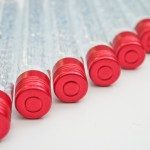Link to Pubmed [PMID] – 32339539
J. Invest. Dermatol. 2020 Apr;
Hidradenitis Suppurativa (HS) is a chronic inflammatory disease of the skin associated with specific lesional dysbiotic features. We studied the microbiome of clinically unaffected typical HS sites (armpits, inguinal folds and gluteal clefts) in 60 HS patients and 17 healthy controls.192 samples obtained by swabbing were analyzed by bacterial cultures. 116 randomly selected samples were studied by 16S rRNA gene amplicon sequencing. Patients and controls showed similar characteristics, except for smoking (87% vs 6%, respectively). HS skinfolds were characterized by an increased abundance of anaerobes, predominantly Prevotella, but also Actinomyces, Campylobacter ureolyticus and Mobiluncus, contrasting with a lower abundance of skin commensals such as Staphylococcus epidermidis, a major component of the skin microbiome, Kocuria and Micrococcus luteus. Three independent factors were associated with high anaerobes abundance by multivariate analysis: samples originating from HS patients (p= 2.1 x 10), body mass index (p= 5 x 10) and the sampling site, the gluteal cleft being the most anaerobic area, followed by inguinal folds and axilla (p= 3 x 10). The microbiome of clinically unaffected HS skinfolds is reminiscent, albeit to a minor extent, of the microbiome of chronic suppurative HS lesions and may fuel inflammation at a preclinical stage of the disease.
